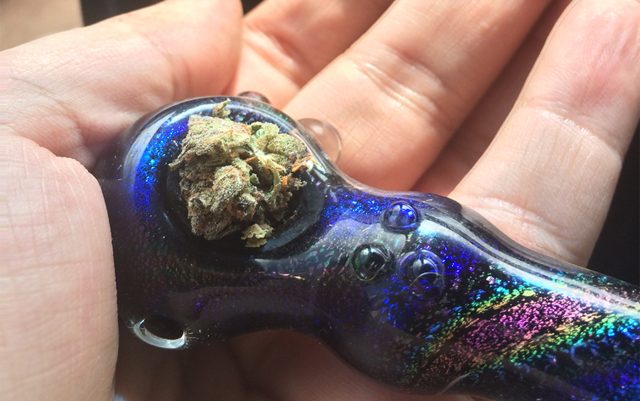A new study published this week takes a look at data from the National Survey on Drug Use and Health regarding cannabis use among those aged 65 years and older. The study seems to confirm something we have known for several years – namely, that more seniors are using marijuana.
While only 0.4% of seniors admitted to using cannabis in 2006, 2.4% said they were cannabis users in 2015, and in 2018 that number had climbed to 4.2%. Of course, some of this increase can be attributed to seniors being more open about cannabis use now that legal consequences are lessening, but there is little doubt that more seniors are using cannabis than ever before.
The combination of lessening consequences and stigma combined with the wealth of information available about the medicinal properties of cannabis has led many seniors to question what they thought they knew about this amazing plant.
Naturally, some are sounding the alarm about this trend of more seniors using cannabis. Apparently the use of cannabis with alcohol is up among seniors, and there are reasonable worries about how cannabis might interact with the mountain of prescription medications many seniors take.
Some also seem to be worried about seniors who have been away from the weed game for too long. “Weed has been getting stronger over the past few decades,” said study co-author Joseph Palamar, an associate professor of population health at NYU Grossman School of Medicine, “and a lot of these seniors don’t take dosing seriously, especially edibles. They think ‘What’s the big deal? I used to do this when I was a kid.’”
While we certainly need to be worried about how cannabis may interact with certain other meds, we must also remember that seniors take a lot of other meds. They have many ailments, ailments from which cannabis could bring them great relief. Maybe marijuana use could help them leave behind more dangerous drugs; at the very least, it is much more benign that many of the prescriptions seniors currently take.
In the end, if someone finds relief from cannabis, it’s no one else’s business. But for seniors – who generally have more ailments and less time left than younger folks – the need can be more imperative. If someone over 65 discovers that cannabis improves their quality of life, good for them. We need to do all we can to make their access to cannabis as easy as possible.







Cannabis users, including seniors, could benefit from a reference tool to compare the spectrum of THC strengths that are available in cannabis plants and extracts. It may also help medical professional professionals in their recommendations.
Users who vote can tell their members of Congress to make the USDA establish a table of cannabis categories to help them gauge the strengths of the various strains of cannabis from which they may choose, like this:
TABLE OF CANNABIS CATEGORIES
THC% FORMAT CATEGORY SUBGRADE
99.0 – 100.0 Extract Isolate Pure
40.0 – 99.0 Extract Concentrate Specified THC%
0.0 – 40.0 Extract Refined Specified THC%
———————————————————-
40.0 – 99.0 Plant Rarefied Specified THC%
39.0 – 40.0 Plant Paramount Top
38.0 – 39.0 Plant Paramount Fine
37.0 – 38.0 Plant Paramount Standard
36.0 – 37.0 Plant Paramount Simple
35.0 – 36.0 Plant Paramount Low
34.0 – 35.0 Plant Prime Top
33.0 – 34.0 Plant Prime Fine
32.0 – 33.0 Plant Prime Standard
31.0 – 32.0 Plant Prime Simple
30.0 – 31.0 Plant Prime Low
29.0 – 30.0 Plant Premium Top
28.0 – 29.0 Plant Premium Fine
27.0 – 28.0 Plant Premium Standard
26.0 – 27.0 Plant Premium Simple
25.0 – 26.0 Plant Premium Low
24.0 – 25.0 Plant Select Top
23.0 – 24.0 Plant Select Fine
22.0 – 23.0 Plant Select Standard
21.0 – 22.0 Plant Select Simple
20.0 – 21.0 Plant Select Low
19.0 – 20.0 Plant Choice Top
18.0 – 19.0 Plant Choice Fine
17.0 – 18.0 Plant Choice Standard
16.0 – 17.0 Plant Choice Simple
15.0 – 16.0 Plant Choice Low
14.0 – 15.0 Plant Good Top
13.0 – 14.0 Plant Good Fine
12.0 – 13.0 Plant Good Standard
11.0 – 12.0 Plant Good Simple
10.0 – 11.0 Plant Good Low
9.0 – 10.0 Plant Decent Top
8.0 – 9.0 Plant Decent Fine
7.0 – 8.0 Plant Decent Standard
6.0 – 7.0 Plant Decent Simple
5.0 – 6.0 Plant Decent Low
4.0 – 5.0 Plant Basic Top
3.0 – 4.0 Plant Basic Fine
2.0 – 3.0 Plant Basic Standard
1.0 – 2.0 Plant Basic Simple
0.0 – 1.0 Plant Basic Low
This would depend on carefully descheduling both THC and cannabis. THC can be carefully descheduled by excluding cannabis-derived THC from Schedule 1, like this:
Tetrahydrocannabinols except for tetrahydrocannabinols occurring naturally on or in, or extracted from the plant Cannabis sativa L.
Prohibition is the enemy of knowledge. Ending cannabis prohibition can be achieved when Congress simply reconstructs the malformed federal definition of marijuana to carefully deschedule cannabis with limited federal prohibitions that uphold the Constitution, like this:
The term “marijuana” means all parts of the smoke produced by the combustion of the plant Cannabis sativa L., which is, as are the viable seeds of such plant, prohibited to be grown by or sold by any publicly traded corporation or subsidiary company, and such smoke is prohibited to be inhaled by any child or by any person bearing any firearm, as is their intake of any part or any product of such plant containing more than 0.3% THC by weight unless prescribed to such child by an authorized medical practitioner.
Congress can then remove marijuana itself from Schedule 1 by reconsidering the adulterated medical value of cannabis-derived smoke.
All of these changes can be put into one single marijuana reform bill. Let’s contact our members of Congress about making these reasonable changes to federal marijuana law.